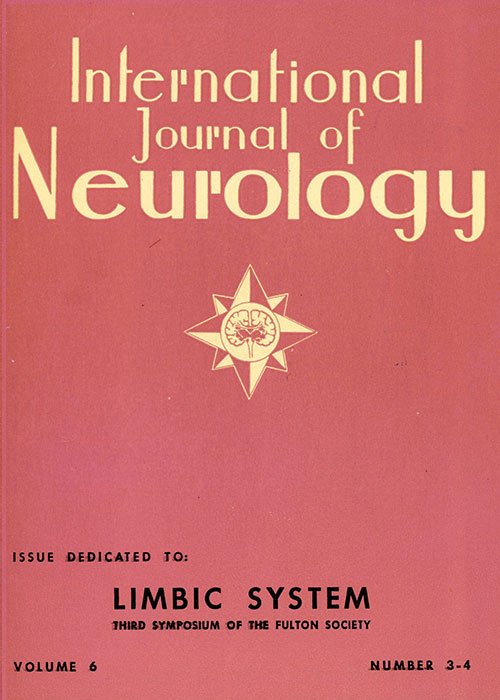Full Issue
DOI:
https://doi.org/10.62486/ijn196819Abstract
The double issue (Numbers 3–4) of Volume 6 of the International Journal of Neurology (1968) was dedicated to the limbic system. It opened with an editorial and featured groundbreaking studies that deepened the understanding of this complex network linking emotion, behavior, and neurophysiology.
The volume included Paul I. Yakovlev’s theoretical analysis of telencephalic organization (Telencephalon impar, semipar and totopar), followed by Alden Spencer and Eric R. Kandel’s seminal electrophysiological work on the cellular and integrative properties of hippocampal pyramidal neurons. Paul D. MacLean contributed an influential paper on the relationship between the limbic system and visual processing, reinforcing his triune brain model.
Experimental studies examined motivated behavior after forebrain lesions in rats (Kaada, Rasmussen, and Bruland) and the effects of psychotropic drugs on amygdaloid after-discharge in cats (Bertolini et al.). Clinical contributions explored limbic syndromes in humans (Aird) and the therapeutic role of rostral cingulotomy in pain relief (Follz and White).
The issue concluded with book reviews and news, representing a landmark collection that bridged experimental neuroscience and clinical neurology in the study of limbic function and emotional regulation.
Downloads
Published
Issue
Section
License
Copyright (c) 1968 International Journal of Neurology (Author)

This work is licensed under a Creative Commons Attribution 4.0 International License.
The article is distributed under the Creative Commons Attribution 4.0 License. Unless otherwise stated, associated published material is distributed under the same licence.







